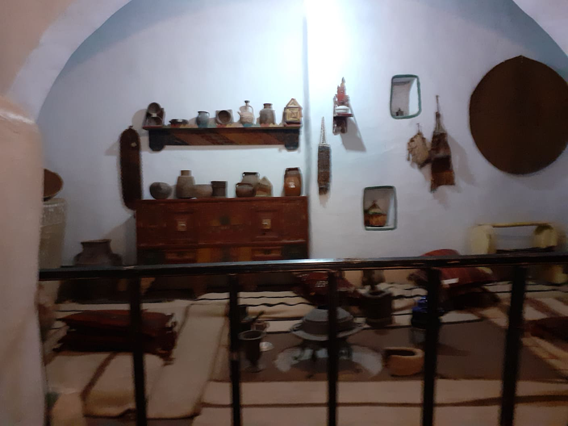You are here
Scholar calls for conservation of Jordan Valley's 'rich historical heritage'
By Saeb Rawashdeh - Apr 21,2016 - Last updated at Apr 21,2016
AMMAN — Some of the oldest sites recorded in human history are located in the Jordan Valley, as they witness the unbroken link of human settlements on both the West and East Banks, according to professor Moawiyah M. Ibrahim.
The Jordan Valley stretches from Lake Tiberius in the north to the Gulf of Aqaba in the south.
It is one of the archaeologically richest areas of the Middle East and has played a significant role in the Natufian and Neolithic periods(around 8000-7000 BC), as well as in the formation of the village farming communities of the Chalcolithic period and the first towns of the Early Bronze Age (third millennium BC), according to Ibrahim.
In a lecture titled "Cultural Preservation of the Jordan Valley” held recently at British Institute in Amman, Ibrahim emphasised the need to preserve the rich historical heritage of the area from destruction, overpopulation and commercialisation.
The growth of the population of the Jordan Valley correlated with the development of agricultural and industrial production, which led to active trade, the scholar, who is the author of 10 books and over 120 scientific articles in specialised journals and scholarly publications, stressed.
“Excavation sites like Tal Abu Hamed, Tuleilat Ghassul and Hujairat Al Ghuzlan produced good evidence about agricultural, religious life and metallurgy in the Jordan Valley,” the professor said.
Central organisation slowly started to emerge in the Early Bronze Age (second half of the 4th and 3rd millennia) and major sites of that period have been excavated in Tall Al Shunah, Pella, Tal Al Hayat, Tal Abu Al Kharaz, Tal Saidiyeh, Tal Al Hammam, Bab Dhraa and Numeirah, added the expert.
“This is in addition to sites like Karak, Tal Al Qidah [Hazor] and others north of [Lake Tiberius],” underlined Ibrahim, a PhD graduate of the Free University in Berlin in 1970.
“The beginning of the Early Bronze Age represents the transition between village farming communities and urban life,” he explained.
Full urban sites can be observed at several excavation sites of the Jordan Valley, noted the archaeologist, adding that "some fortified sites of these periods show administrative and religious buildings”.
The interconnectedness between the Jordan Valley and Egypt, North Syria and Anatolia manifested itself in more active trade, the scholar underlined, while various urban sites and necropolises have been identified to belong to the Early Bronze IV Period, which “witnessed an economic recession, so major urban centres were abandoned or replaced by poor, camp-like settlements” Ibrahim added.
Not many evidence from the Hellenistic period has been excavated at Jordan Valley sites but there is enough evidence from the Roman and Byzantine periods, he stressed.
Regarding Islamic periods: “Sites of the Umayyad and Abbasid periods were less represented while the Ayyubid/Mamlouk period was the best represented period in every part of the valley," the archaeologist noted
Agriculture and sugar industry flourished during the Ayyubid/Mamlouk period, the professor said.
“Sugar mills with heavy concentration of associated sugar pots were found in large numbers. Many of these sites were abandoned during the Ottoman period,” Ibrahim noted.
The professor underlined the importance of systematic preservation of archaeological locations in the Jordan Valley and urged local institutions and communities to prevent devastation of the historical heritage by modernisation, commercialisation, overpopulation and negligence.
Related Articles
AMMAN — Bayesian modelling, a method of statistical analysis, applied to Radiocarbon dating, has changed perceptions of the Early Bronze Age
AMMAN — Trade and trade networks had a great impact in linking civilisations to both urban centres and undeveloped peripheries, said a Jorda
IRBID — The Museum of Social History at Yarmouk University centres around showcasing the socio-economic development of Jordan and the surrou



















